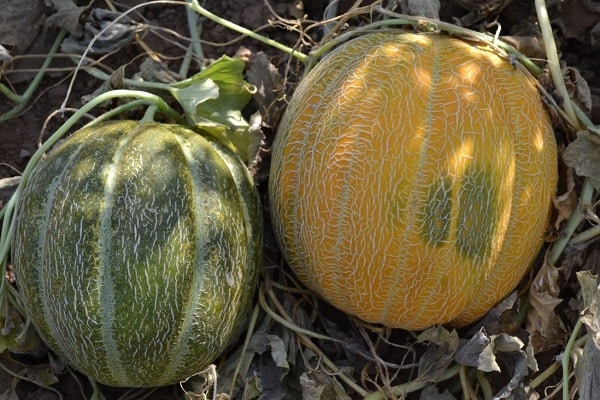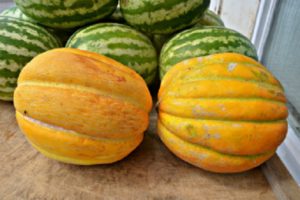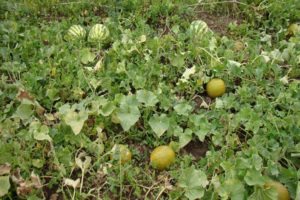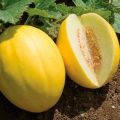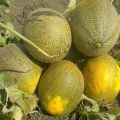Formation, planting, cultivation and care of melons in the greenhouse
In the northern regions of Russia, the only way to enjoy the taste of ripe, self-grown melon is to plant it in a greenhouse structure. Before planting pre-grown seedlings in a greenhouse, you need to know how to do this correctly. Otherwise, if the melon is improperly grown in the greenhouse, it will not produce juicy, ripe formed fruits, and it may even die. This is due to the fact that such a plant culture is thermophilic and needs good lighting and ventilation. It is characterized by an extended growing season, cold intolerance. You can cope with all the capricious features of the melon by creating the right conditions in the greenhouse.
Landing rules
There are several features of growing melons in a polycarbonate greenhouse. To get a rich harvest, before planting, the summer resident must determine a scheme for caring for this crop, forming a plan for the timely planting of seedlings, its transplant, and ensuring optimal conditions for plant growth.
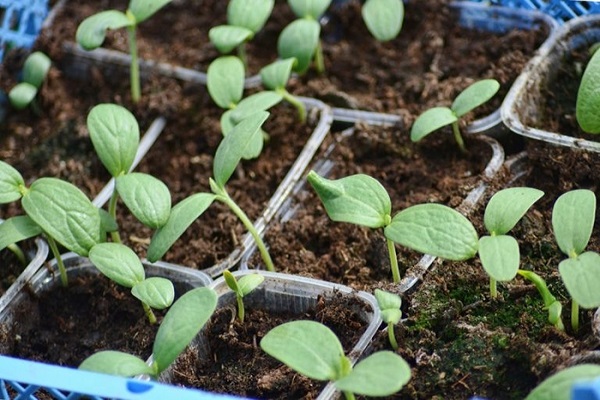
The first step is to select a site suitable for planting. In this case, you should refuse to use the greenhouse, as its dimensions are too small. The greenhouse must be at least two meters high. This is due to the fact that melons gradually begin to curl along the trellises, and in the lower structures there will be no free space for the full formation of fruits.
If the days in the region are not bright enough, the greenhouse should be equipped with special lamps. Since the melon prefers to grow warm, it is necessary to provide the greenhouse with devices that maintain the optimum temperature for its growth. Good ventilation should be installed in the greenhouse, since the melon does not develop in high humidity. At the same time, drafts should not be allowed.
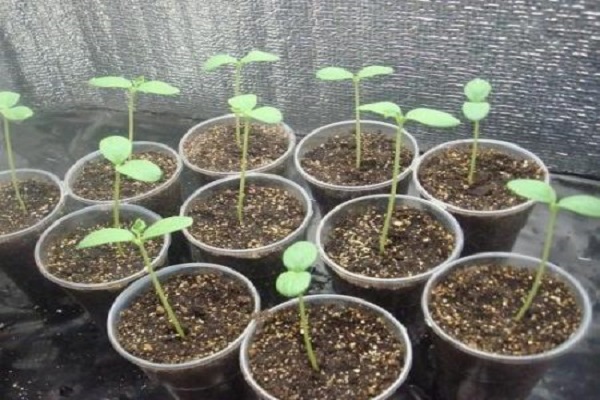
Next, you need to form the beds. This is done taking into account the following instructions:
- 20 centimeters of the surface soil layer is removed.
- Twigs, gravel, expanded clay are placed in the resulting recess.
- Hay is laid on the laid drainage. This component can also be replaced with cut grass.
- Then everything is sprinkled with humus.
- Fertilizer is covered with fallen leaves, sawdust.
- The formed layer is covered with soil, to which lime and mineral fertilizers are added. These components should be added only if the soil is heavy and acidic.
- Finish work on the bed by watering it with warm water and covering it with dark material, allowing the soil to warm up quickly.
With this instruction, you can create a warm, nutritious environment in which the plant will grow comfortably.
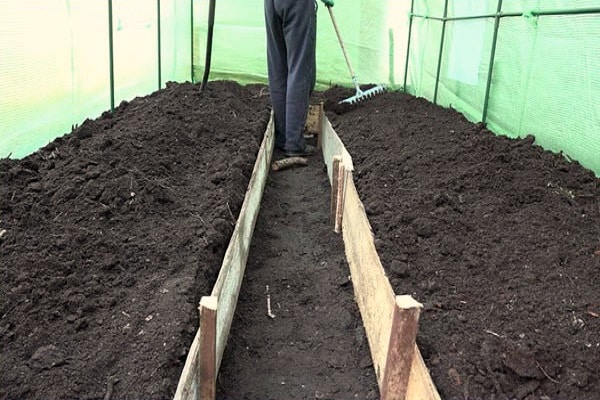
Melon can only be planted in a greenhouse by seedling. To get a strong, hardy plant, you must follow several rules for growing seedlings:
- Sowing seeds is required in pots made of peat with a diameter of 14 centimeters. Since the melon does not like transplanting, this method will avoid damage to the seedlings.
- Sowing a crop should only be done when optimal temperature indicators are established: during the day, 23 degrees with a deviation in both directions by 3 units, and at night 18 degrees.
- Before planting the material, it should be hardened by lowering the night temperature to 16 degrees.
- Seedlings are best placed on the southern windows. If the weather is cloudy, phytolamps should be installed on the windowsill. The same device should be installed if the duration of daylight hours is less than 12 hours.
- Watering the seedlings is required with warm, settled water. Watering is organized only after the topsoil dries up.
To protect the sprouts from excessive moisture, it is better to use the soil with the addition of sand for growing.
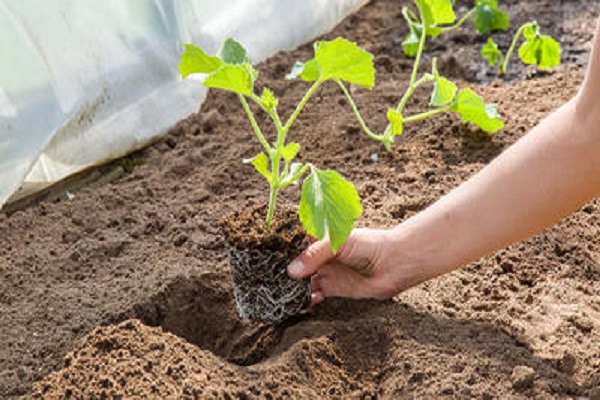
Greenhouse landing
Melons are planted in a greenhouse structure made of polycarbonate sheets in late May. But it is necessary to take into account the peculiarities of the weather of the season.
It is also necessary to pay special attention to the choice of the melon variety. For greenhouse cultivation, the following varieties will be the best option:
- Collective farmer.
- Galia.
- Canaria.
- Augmented.
- Sharen.
These varieties are distinguished by a sweet taste, reduced ripening times, endurance to temperature extremes, and a good harvest.
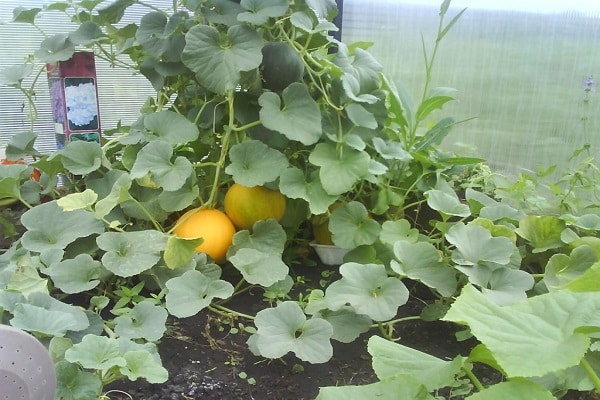
If planting is planned in a harsh climate, it is better to give preference to early maturing varieties:
- Golden.
- Siberian early ripening.
- Gribovskaya.
- Tobolin.
- Zolotinka.
Before planting seedlings, it is necessary to prepare the soil, warm it up. The holes are made according to the 40x40 or 45x45 scheme. Humus or compost is poured at the bottom of the holes. Use for this should be 0.5-1 kg of fertilizer. You can replace it with 15 grams of mineral fertilizers. Then 20 millimeters of soil is poured, watering is performed with a weak solution of potassium permanganate.
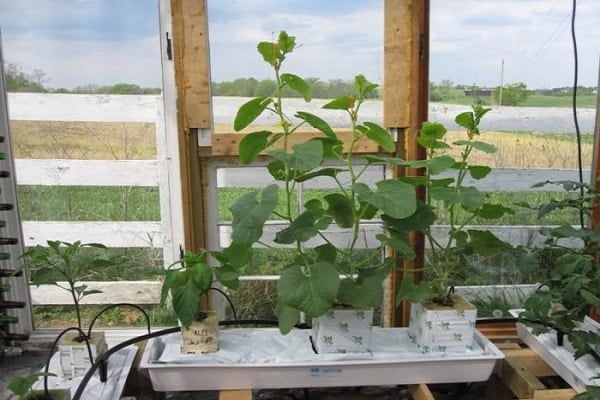
The planted seedlings should be between 30 and 35 days old. 2-4 seedlings are planted in the holes. You need to transplant seedlings directly in peat pots. Plants are dug in, watered with warm, settled water, sprinkled with mulch made from calcined sand.
You need to plant seedlings so that they protrude 3 centimeters above the garden bed.
To speed up the adaptation of seedlings, a film cover should be formed over the garden bed. It is attached to arcs and pegs. The film should be removed when the plant begins to actively develop. Compliance with the rules also affects the quality of the crop. melon formation in the greenhouse... When the fifth leaf appears, the plant needs to be pinched, eliminating the growth point for the formation of adventitious lashes. The weakest of them are cut off.
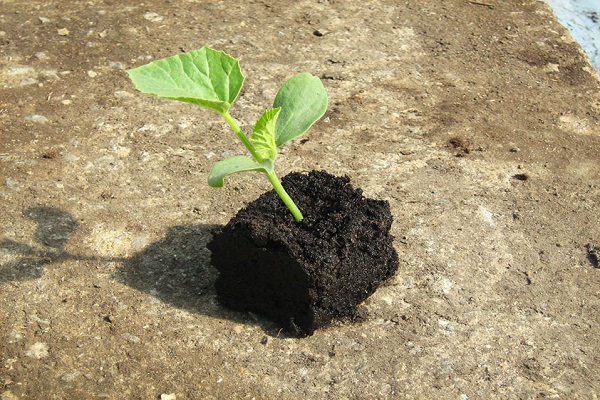
Soil mulching
Providing proper care for melons in a polycarbonate greenhouse also touches on the need for mulch. The soil should be covered with mulch immediately after planting. For this, it is recommended to use stone mulch, protecting the planting with stones. Also, bottles filled with water and made of dark glass should be placed near the plants. The bottles are stacked to form a triangle surrounding each plant.
Such a coating is necessary so that the water poured into the bottles warms up under the influence of the sun's heat, and protects the sprouts from the cold. If this is not done, the fruit will not form properly, since the plant will be weakened.
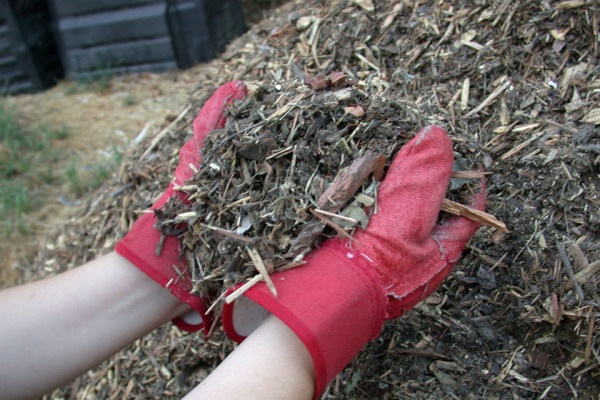
Tying and pinching
On the 4th day after planting, the melon begins to be tied to the polycarbonate greenhouse trellis. Bushes are tied up in a checkerboard pattern. The twine is tied around the first leaf, secured with a sliding knot on the wire.As the plant grows, the lash is twisted around the twine from left to right.
Greenhouse melons should be formed into 2 wattle fence, fixed on the trellis. The rest of the melon shoots must be pinched off. The pinching of the lateral stalks of the melon in the greenhouse is carried out after the formation of 4 leaves, and the main lash - when it reaches the level of the wire.

To get a rich harvest, no more than 6 ovaries are left on one lash of small-fruited varieties, and no more than 2 for large-fruited varieties. If the melon is lying on the ground, plywood should be placed under it, which will protect the crop from rotting.
Melon watering rules
Melon is a plant crop that tolerates drought well, excessive watering for it turns out to be detrimental. Therefore, when growing in a greenhouse, you must follow the rules for watering melons:
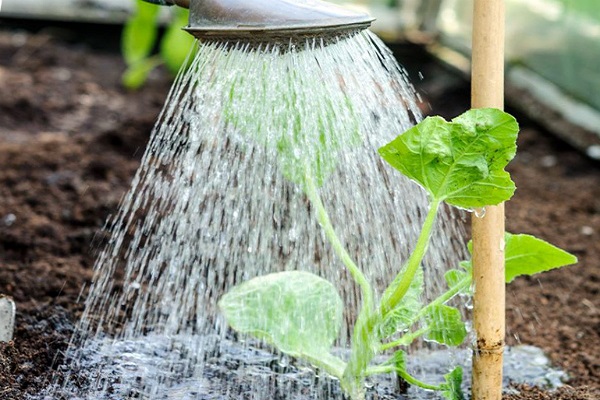
- use only warm water, its temperature should be in the range of 33-35 degrees;
- with the active phase of fruit formation, watering increases, as the culture begins to need enhanced nutrition;
- when watering, water should not get on the leaves, stems, the area of the root collar, otherwise root rot will form;
- during the formation of flowers, ripening of fruits, it is necessary to lower the humidity in the greenhouse, ensuring regular ventilation.
When growing melons in a greenhouse, it is necessary to ensure that condensation does not form on its walls, as it will adversely affect planting.
Fertilizer use
Growing a southern fruit in a greenhouse requires fertilizing the soil. This should be done taking into account several nuances:

- During the period of fruit formation, complex fertilizers are required once every 2 weeks. Fertilizer Kemir is considered the best option for this. It is also recommended to add mixtures made from potassium sulfate or ash. Such feeding will help ensure that the melon needs an increased amount of potassium nutrition. If you have a question why the ovaries of a melon growing in a greenhouse turn yellow, you need to pay attention to the amount of potassium in the soil.
- The frequency of fertilization of the plant must be increased when its fruits begin to pour. At this time, the soil should be fertilized once every 7 days. Zircon, Epin, as well as huminates are suitable for processing. These substances are excellent growth stimulants, their use should be alternated with each other.
The use of these fertilizers makes the plant strong, which is why pests and diseases are less affected during cultivation.
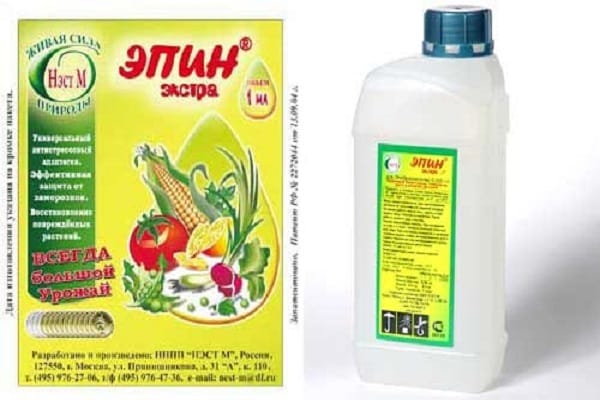
Hand pollination and melon formation
When grown in a greenhouse, the melon is pollinated by hand. For this, it is necessary to spray with fruit formation stimulants, for example: Bud, Ovary. Pollen is actively formed under the influence of these agents.
After spraying, the male flower is embedded in the female one. Next, a few light rotational manipulations are done. In this case, the flowers must not be damaged. You can also apply pollen to a female flower with a brush. Pollination should be done early in the morning.
To get a rich harvest, you should not only pollinate the flowers, but also form the melon in the greenhouse. This should be done according to the instructions presented above.
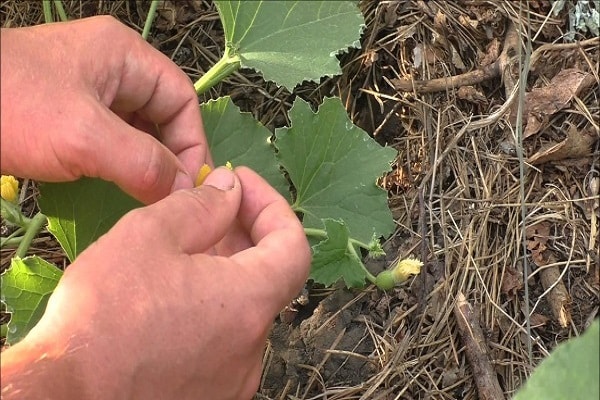
Harvesting a delicious harvest
With proper care, the melon ripens in early August.... You can identify a ripe fruit by its appearance. In the area of the tail, ring cracks form, and a sweet aroma emanates from the fruit itself. If the fruit springs in the hands when squeezed, then it can already be consumed. If you plan to transport the melon crop, you need to prepare boxes and wax paper. Each fruit is wrapped in paper to prevent rot.
If the ripening of the fruits is not over in August, the melon can be harvested until October. Ripe melons are easily separated from the stalk; if they grow in limbo, they often fall off on their own. Such fruits should be harvested immediately to eliminate the risk of damage to the crop. Store fruits in a cool, dark place. Leaving ripe melons in the sun is prohibited, as this will lead to their deterioration.
